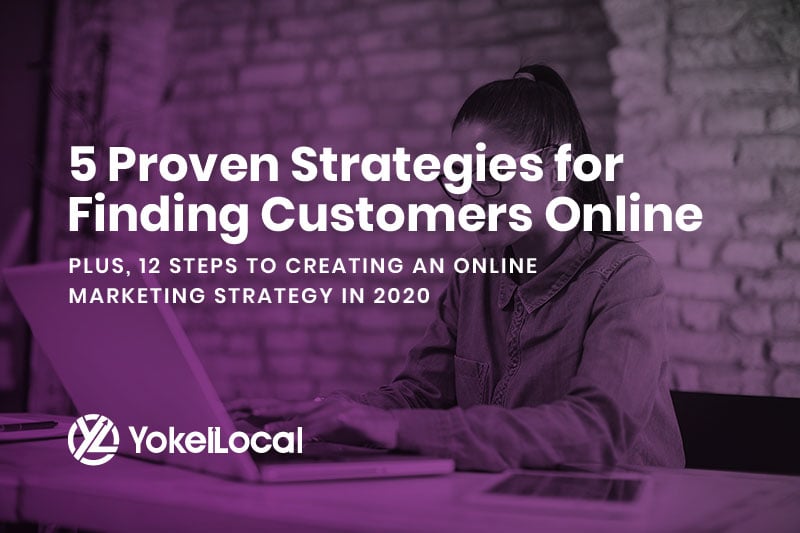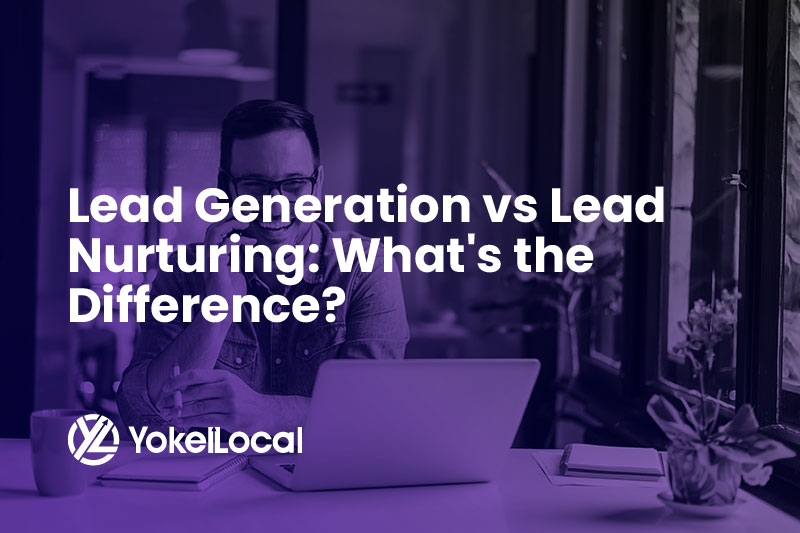If you think simply having a website with some content is enough to find new customers for your business, think again. With all the websites out there, people will not go to your website because it’s new and shiny.
You need to go out and find your customers online so you can better market your brand, products, and services. Knowing how to get customers online will result in more website traffic and revenue for your business.
How to Find Customers Online For Your Business
In today’s digital environment, finding customers online begins with understanding the different channels for doing so. From optimizing your website to appear in search results to engaging on social media, there are numerous strategies to find potential customers online.
Here are five of the best way to do so:
Organic Search
The goal of every digital marketer is to optimize their website so customers find their website through organic search. Organic search occurs when a web user types in keywords into the search bar on their web browser. Search engines like Google and Bing will display a list of websites they think are most relevant to a specific search. Web users will typically click on the websites that appear at the top of search results.
If you optimize your website so that it comes up in search results for particular keywords and the user clicks through your website, you have attracted them through organic search. Organic search is good for a long-term digital marketing strategy, particularly for products and services that people know about and are actively searching for.
You can boost organic search for your website through search engine optimization (SEO) and implementing targeted keywords into your website and blog content.
Pay Per Click
In some instances like social media marketing, you’ll be better off attracting customers through paid ads.
Pay-per-click is used to get immediate web traffic and for getting quick attention and exposure to products and services that customers already know about and are actively searching for.
Common pay per click strategies include paid search ads through Google Ads or banner display ads and Facebook ads.
Organic Social Media
Businesses can also rank organically on social media, though it is more difficult.
Social media platforms continually refresh their content which pushes Facebook posts and Twitter tweets down in the user’s newsfeed. The farther down an update is, the less likely customers will engage with that brand. To appear at the top on social media, you’ll need to post viral content to the right people at the right time. Regular posting on social media channels throughout the day can also increase your chances of organic social media success.
Paid Social Media
For many organizations, finding customers online through social media channels is easier and successful through paid social media advertisements.
Major social media platforms have marketing and advertising options where businesses can pay to have their brand, products, or services featured at the top of the page. Facebook and Instagram, for instance, have paid advertising available. Both these social media platforms have easy step-by-step instructions so you can create ads in a matter of minutes.
Just like organic social media, paid social media is good for brand awareness, particularly for products and services that people may not know about or search for.
Brand Referrals
In business, the concept of “it’s not what you know, but who you know” has become the motivation behind networking, business development, and partnership building. Entrepreneurs and business owners just striking out on their new business ventures rely on networking and referrals to build up their new businesses and garner brand trust and authority.
Online brand referrals involve businesses reaching out to other, legitimate, highly recognized brands in order to create a cross promotion partnership where both companies promote through mentions or links to the other business. Brand referral and networking can build brand awareness and authority for new businesses that lack social capital, and may take any of the following forms:
- Guest blogging
- Getting listed on online directory sites
- Writing product reviews
- Link building
- Mentioning other brands and products from third parties
12 Steps to Creating Your Online Marketing Strategy
Now that you know how to reach customers online, it’s time to create an online marketing strategy that will get their attention and drive them to your website. Below are steps to create a successful online marketing strategy:
1. Survey Your Current Customers
By learning more about your current base of clients, you can better understand what attracts them to your site. You can learn more about existing customers in several ways:
- Sending out an online survey via email.
- Using your social media platforms to ask questions about them.
- Analyzing, through the use of various tools, how customers are interacting with your website and content.
The information you gather from your surveying can then be used to spearhead your efforts in gaining new online leads.
2. Identify Your Buyer Personas aka Target Customers
Locate new buyer personas by understanding who it is you are trying to target. Who is your ideal customer? Who is most likely to buy your product or service?
Use data from resources such as your web analytics and sales reports to answer some simple questions about potential customers:
- Who are they?
- Why should they care about your company?
- How do they find you and how do you convert them into customers?
3. Analyze How Your Competitors Show Up Online
How are competitors attracting customers? Is their content engaging? What keywords are they ranking for? Use tools such as Google Trends to keep up with the latest data trends in your industry by comparing your data to that or your competitors. Google Alerts is another nifty tool for keeping track of what your competitors are doing.
Conducting a GAP analysis is a great way to see where your marketing strategies are succeeding and where they are falling short compared to those of your competitors. Look at the following to see where you are ahead and where you could improve:
- Marketing channels
- Website and blog content
- Keywords
- Usability of your website
- Your website’s SEO meta data
- Social media engagement
- Buyer personas
4. Choose the Channels That Work For You
When creating your digital marketing strategy, you need to do some research into who your ideal audiences are. Buyer personas are great at helping you figure out not only what content would best resonate with your audience, but they will let you know what online channels your audience is active on.
Each channel attracts a particular crowd and has unique content styles that cater to that audience. To fully engage with your audience, you need to find out where they are online and then produce appropriate content. The channels that your audiences frequent will largely depend on your industry, products, and services.
Be wary of digital marketing trends and consider whether those channels are popular with your business’ audience. Conducting interviews with customers, asking for feedback and reviews, and researching on analytics platforms like Google Analytics can give you the demographic and online behaviors you need to create buyer personas.
5. Study Up on Tactics Related to The Channels You Choose
You’ll want to create a digital marketing strategy that is appropriate to those specific channels. As mentioned previously, the content for each channel is different.
Consider your marketing goals and objectives, the needs of your audience, and the channels they are on.
6. Identify the KPIs That Will Help You Measure Success
With the capabilities of data analytics tools available, you can measure nearly any KPI relevant to your marketing goals and strategy. While marketers think the abundance of data will give them a complete picture of their marketing campaigns, time and money can be wasted on KPIs and metrics that are irrelevant and useless to their unique marketing goals.
When creating your marketing strategy, list your goals and objectives and the KPIs that would best measure and assess whether your marketing efforts are on track for success. A set amount of KPIs will keep your marketing team from getting stretched too thin in trying to meet unnecessary KPI goals.
7. Make Reasonable Goals Based on Those KPIs and Your Budget
You have a list of KPIs you want to track and measure. You also have big goals for your overall marketing campaign. Do you also have goals for each of your KPIs? Having ambitious goals can be great motivators, but have a lower chance of getting met. Your KPI goals should follow the S.M.A.R.T framework and be measurable, achievable, realistic, and timely.
Your KPI goals will be defined by your budget. Are you able to afford the tools and programs your marketing strategy calls for to achieve your KPI goals? The more ambitious the goals, the more costs will be involved in creating, implementing, deploying, and measuring your marketing strategy.
8. Ensure That Your Data Collection Methods Are Clean
Google Analytics and Google Adwords are data collection platforms that display information about customer interactions on your website and paid search ads. Instagram, YouTube, Twitter, and Facebook collect data. Programs like MailChimp provide analytics for your email marketing campaigns. Sometimes data is entered into Excel spreadsheets that are transferred into a customer relationship management (CRM) system.
Duplicates, omissions, and inaccurate information occur when data is manually transferred. False information can skew your data numbers and give you the wrong impression as to the effectiveness of your digital marketing efforts.
To ensure your data collection is clean, invest in a program that enables you to track your desired KPIs. It’s important to establish a standardized data collection procedure company-wide.
9. Establish Milestones
Digital marketing campaigns often last many months. If you wait until the conclusion of the campaign to judge its results, you will miss key breakthroughs and milestones along the way. These present opportunities to make need adjustments and improvements in the middle of your digital marketing campaign rather than at the end.
Google Analytics allows you to set up benchmarks and milestones for your digital marketing campaigns.
10. Commit to This Strategy for A Defined Period (Don't Quit Too Early!)
If sales are dropping and you’re spending more on online advertising without seeing any spikes in revenue, it is easy to throw in the towel. Quitting a strategy too early will prevent you from seeing the true effectiveness of your marketing efforts.
Digital marketing takes time to see positive results as it is tied to relationship and trust building. Customers will do business with you and recommend your brand to others in their social circles if they trust that you truly have their best interest in mind and are experts in your industry. These things don’t happen overnight so don’t be afraid to abandon the course when it looks like nothing is improving.
11. Set Up Your Email Marketing Efforts to Support Your Online Lead Generation
When you fail to follow up with people after interacting with them, people will forget about you and do business with a competitor. Email marketing nurtures leads and continues the relationship-building process. When people see your brand name constantly in their inbox, your brand has a better chance of being at the top of their minds.
To use email marketing effectively to move customers through your marketing funnel, you need to have personalized email content tailored to where the customers are at on the buyer’s journey. Email marketing programs like MailChimp have templates to help you monitor metrics such as your email open and bounce rates to judge the effectiveness of a campaign.
12. Optimize Your Website
Some digital marketers get carried away with search engine optimization (SEO) and many business owners think the bulk of the marketing department’s budget and efforts need to go towards it.
Any website, however, can benefit from optimization. The simplest way to conduct search engine optimization is through inserting keywords into website content and blog posts.
Google’s Keyword Planner can help you find the best keywords. Once you have a list of keywords you want to rank for, go through your website content and blog posts and insert them where appropriate. Remember to avoid “keyword stuffing” which can result in severe penalties by Google.
Being present online alone won’t manifest in online marketing success. To create a successful digital marketing strategy, you must be aware of the different online channels and marketing tactics available to help you find your customers online. There are steps that will make your online marketing strategy an effective one that drives customers and sales to your website.













